Within and Without: The Refutation of "Good" Hair
Photographer Nakeya Brown offers a new way to look at her breakthrough series in this Pelican Bomb digital exclusive.
Editor's Note
The Refutation of "Good" Hair, a photo-based project by Nakeya Brown, responds to the well-known phrase "good hair," historically used to denigrate, divide, and dismiss black female hair and beauty. Through her portraits of women eating synthetic hair, and plates of soul food, Brown uses the phrase to explore the relationships between language and image, gender and race. In Within and Without: The Refutation of "Good" Hair, a digital presentation created exclusively with Pelican Bomb, we excavate the dialogue between the three positions within the project—that of artist, subject, and audience. We alternate Brown’s original images from 2012, recent interviews with her models, and unsolicited emails and poems she received throughout to visualize a type of disruption and co-creation previously unmapped in relation to her project, finding new points of convergence, deviation, and transcendence.
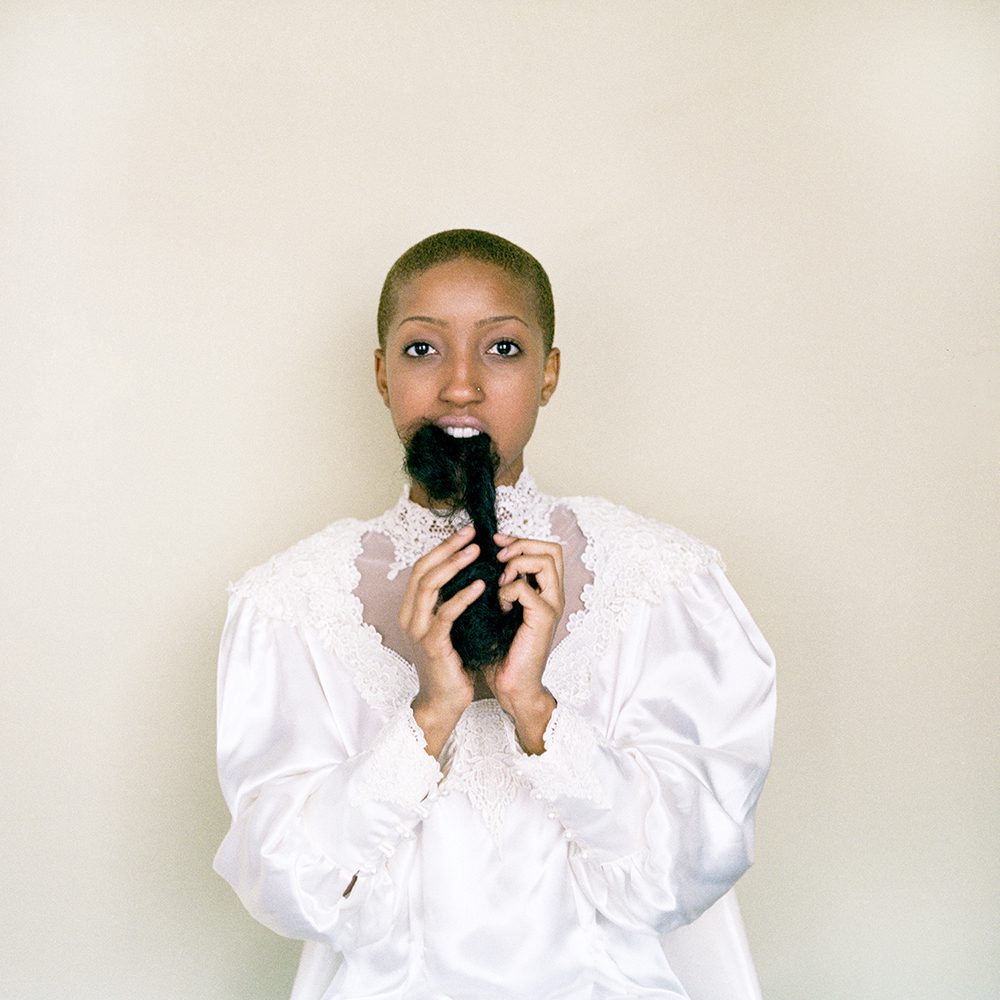
Nakeya Brown, Hair Portrait #2 From the series The Refutation of "Good" Hair, 2012. Inkjet Print. Courtesy the artist.
Tania L. Balan-Gaubert: The Refutation of "Good" Hair epitomizes the journey through my own hair experience. Each woman dons a different style—Afro, straightened, twists, a low fade—and I’ve worn them all. So, at one point or another, I’ve been all of these women.
Each woman demonstrates a different relationship to the hair in her hands and mouth and thus the hair on her head. In my portrait, there’s a sense of detachment and discomfort. I see it in my eyes and the way my mouth grips the hair. It reminds me of when I decided to "big chop." After years of caring for my mane, it began to burden me. I felt weighed down physically and emotionally by the hours and money it took to achieve my favorite styles. I’d had enough. I cut it all off and I was liberated.
As a young girl, I coveted looser curls, what I saw as more "manageable" hair. As a young adult, with the growth of my consciousness, I embraced my hair’s versatility. I became a product junkie and learned everything I could on the science of hair types. Porosity, protein, and moisture were my main focuses as I grew my hair long and wore two-strand twists in between blow-outs.
In the months leading up to my chop, I steadily detached from the processes I had grown to love and became uncomfortable with having hair at all. The Kanekalon in the photograph in many ways represents the ritual hair styling and maintenance I had freed myself from, and, at the time of the portrait, I knew I did not miss.
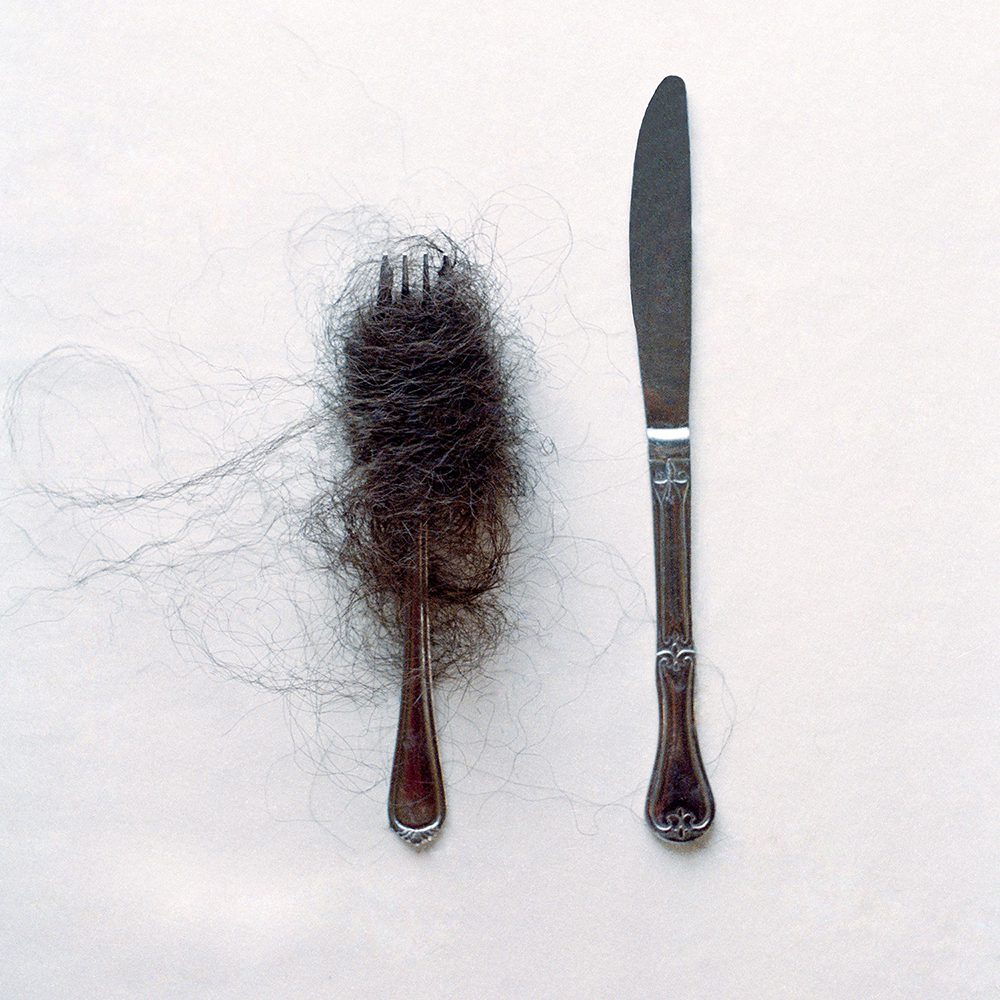
Nakeya Brown, Kanekalon on a Fork From the series The Refutation of "Good" Hair, 2012. Inkjet Print. Courtesy the artist.

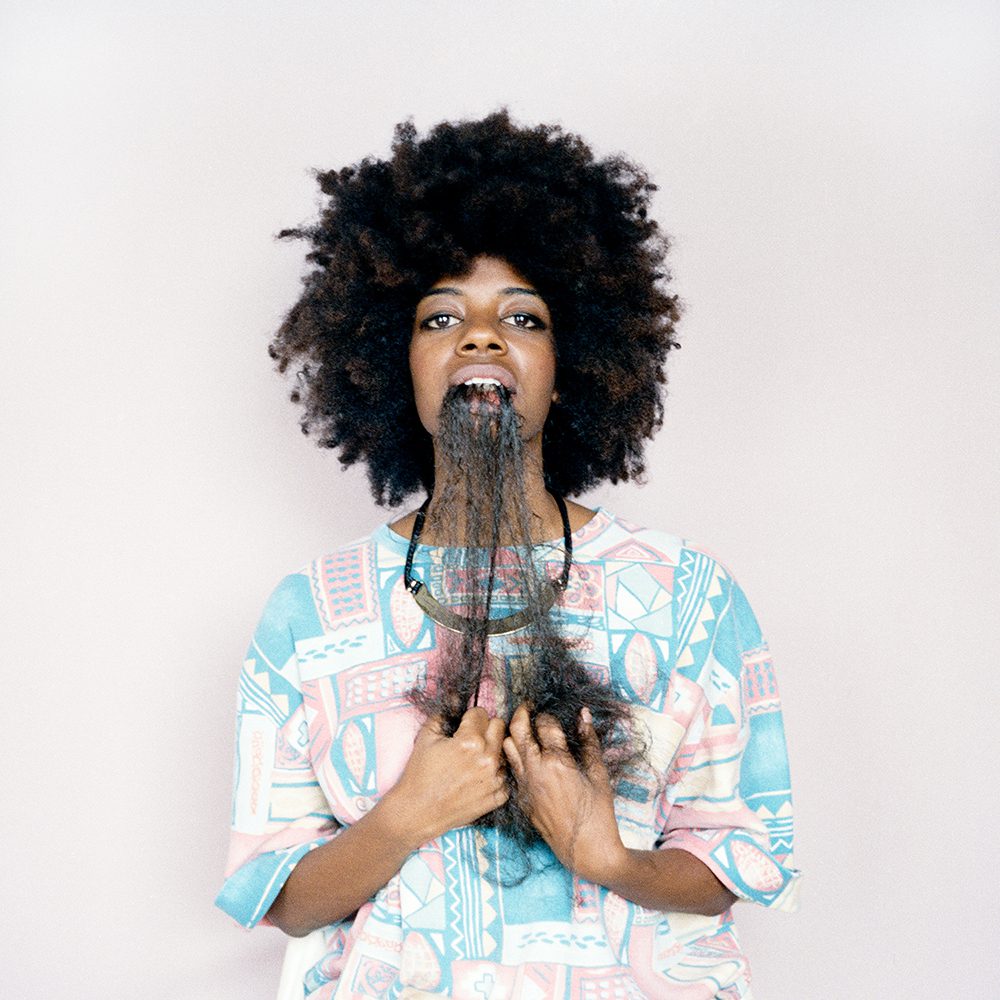
Nakeya Brown, Hair Portrait #1 from the series The Refutation of "Good" Hair, 2012. Inkjet Print. Courtesy the artist.
Raphael Davison: Initially, I see myself as confident and sure of who I am. Through that I also view an extreme sense of comfort. I'm unbothered by the idea of beauty.
The longer I view the image, the more of a veil I see. My hair and my gestures protect my insecurities and help me maintain the idea of feeling comfortable with myself.
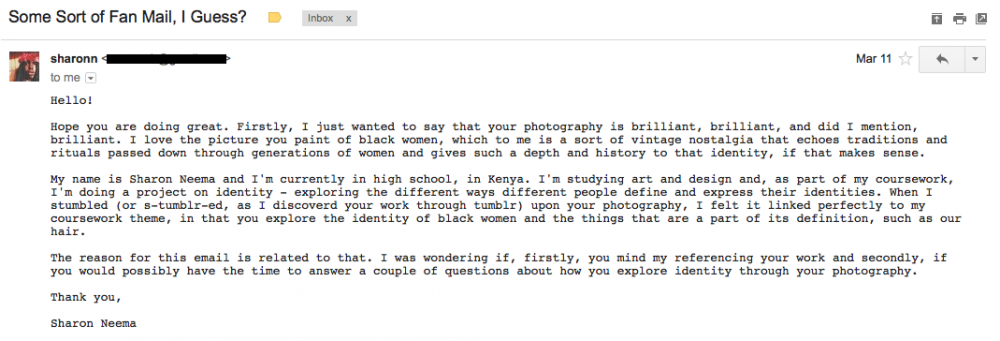
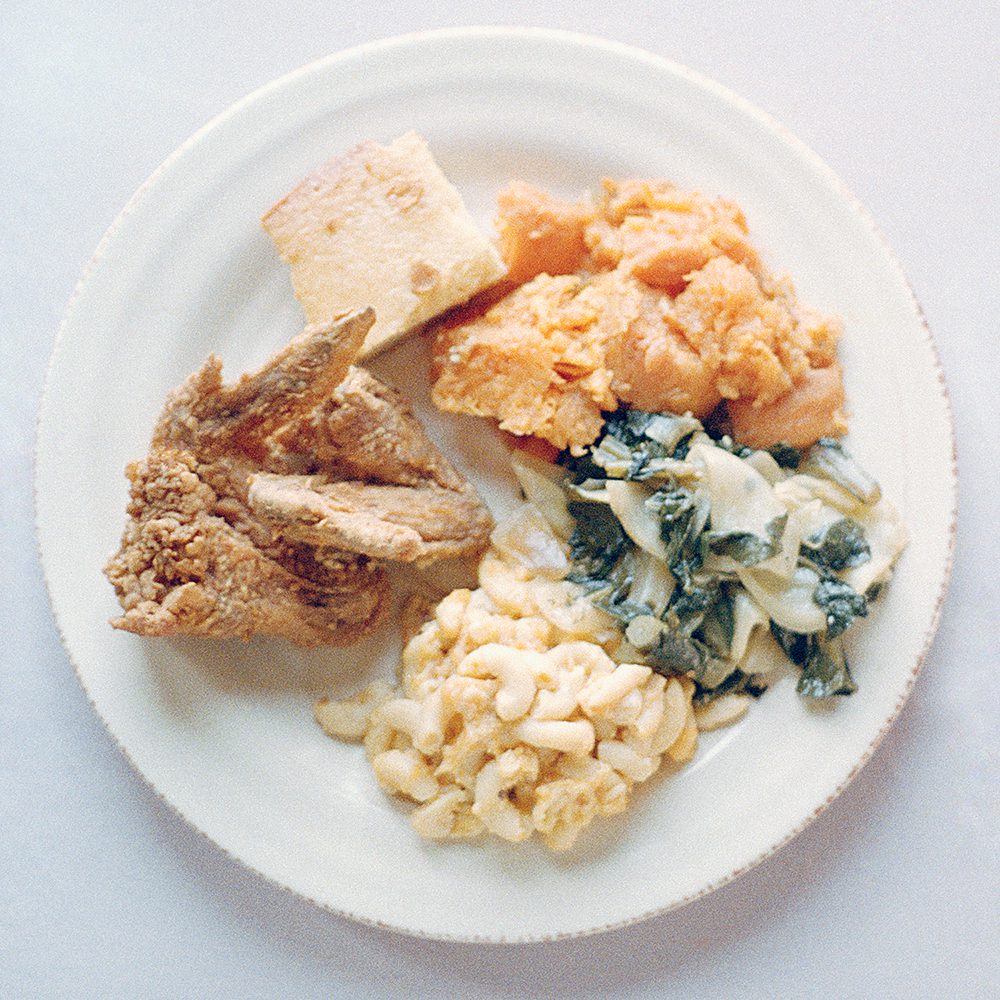
Nakeya Brown, Food for "Good" Souls from the series The Refutation of "Good" Hair, 2012. Inkjet Print. Courtesy the artist.
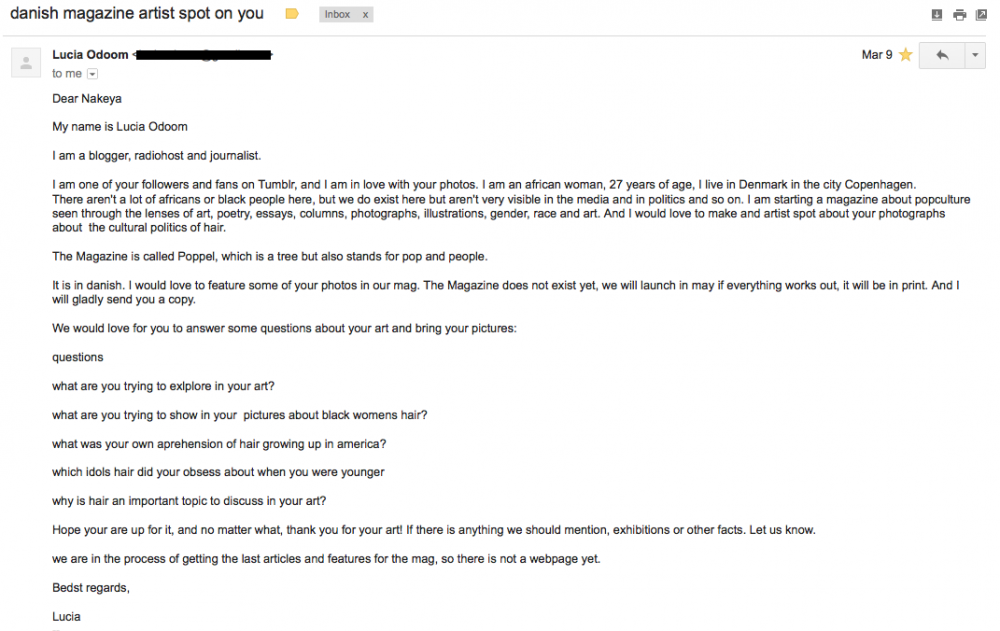
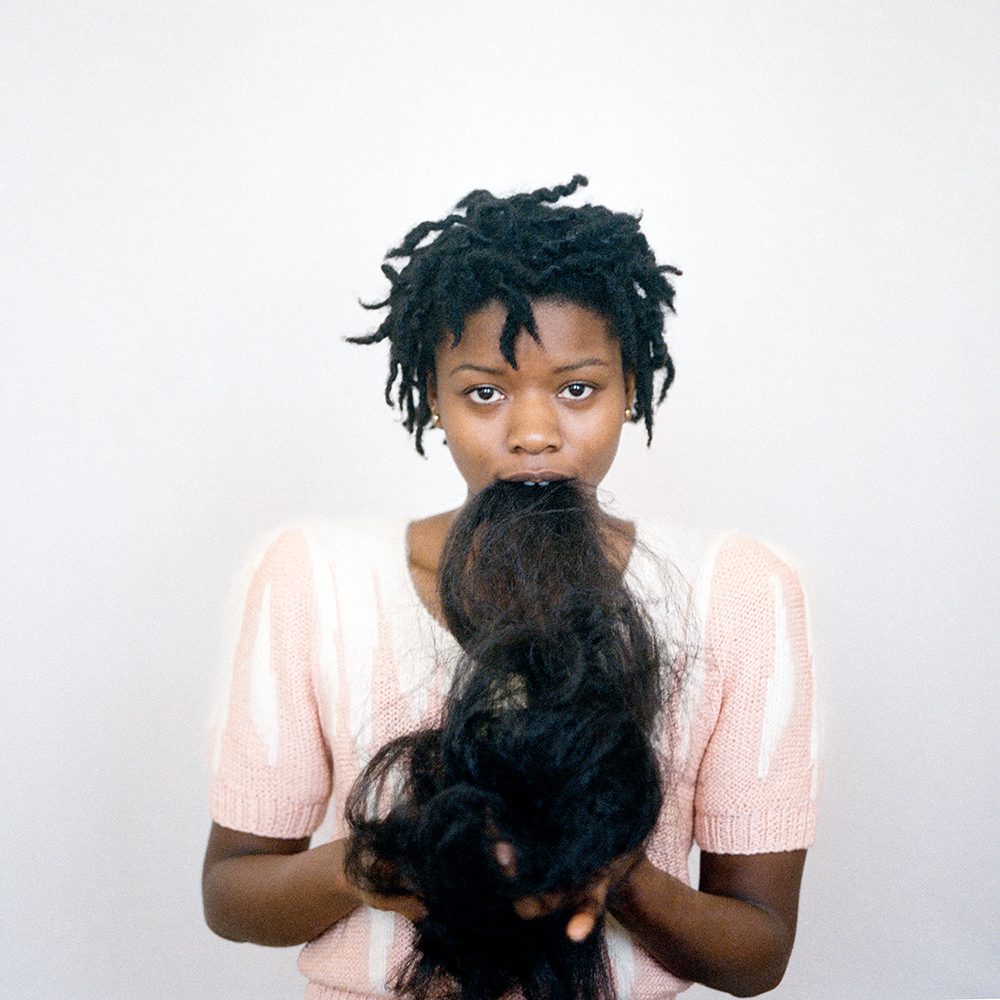
Nakeya Brown, Hair Portrait #4 from the series The Refutation of "Good" Hair, 2012. Inkjet Print. Courtesy the artist.
Shante Barnett: I had to grow into loving my picture. Around the time it was taken, I was extremely timid and soft spoken. When I saw my print up at Nakeya’s last exhibition it took me back to the mindset I was in. I was very proud of my locs and the solidarity of womanhood the photograph represented, but overall just insecure. I spoke to a guy at the exhibition about the look in my eyes and he thought it went perfectly with the theme. How could I have missed that? The confusion and lack of confidence is exactly what many women of kink go through trying to find their own definitions of beauty. I went from the insecurity of consciously and subconsciously experiencing rejection from the men I identify with to looking back and appreciating this challenge for the immense amount of growth it caused.
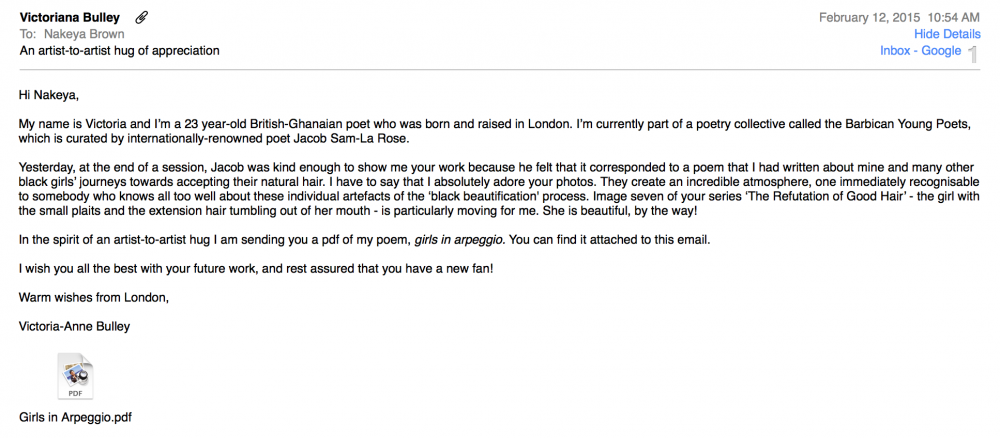
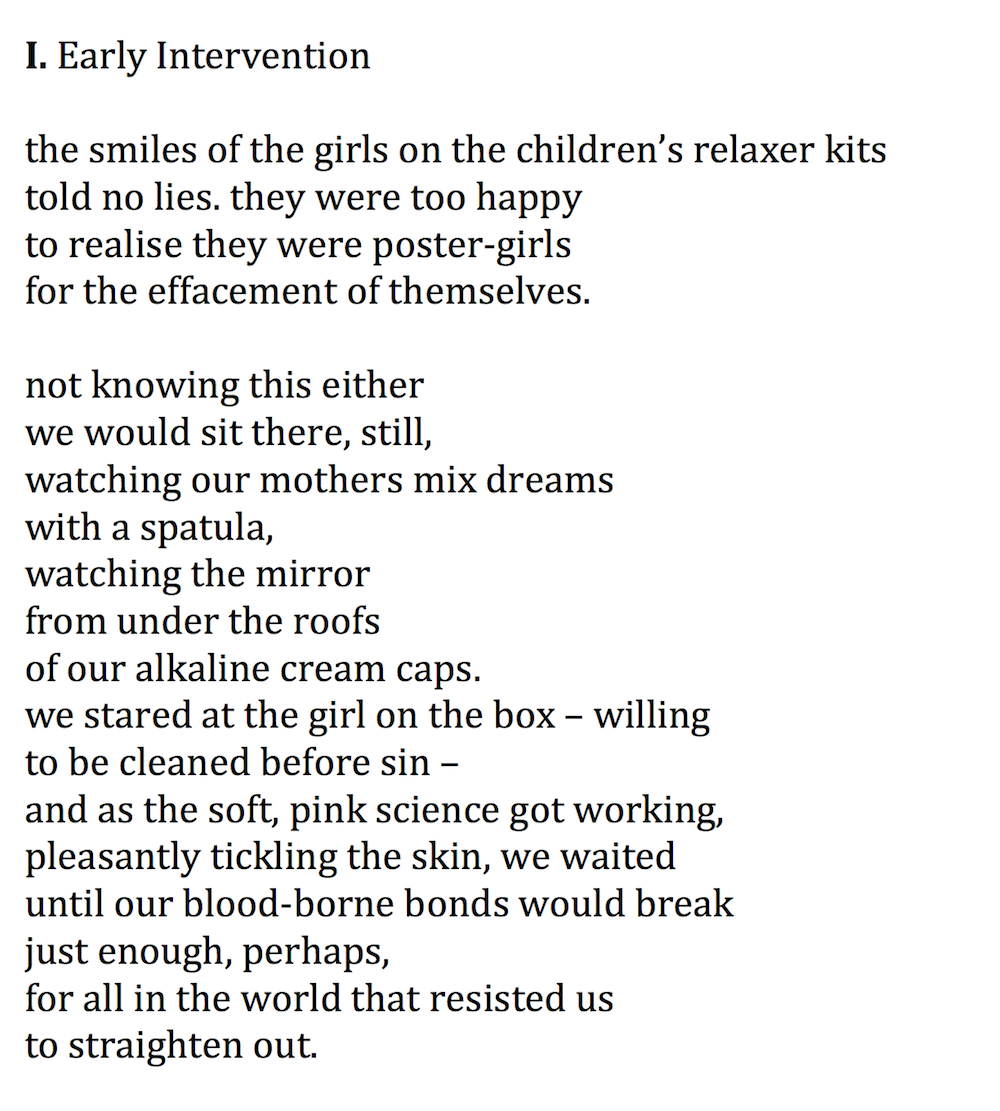
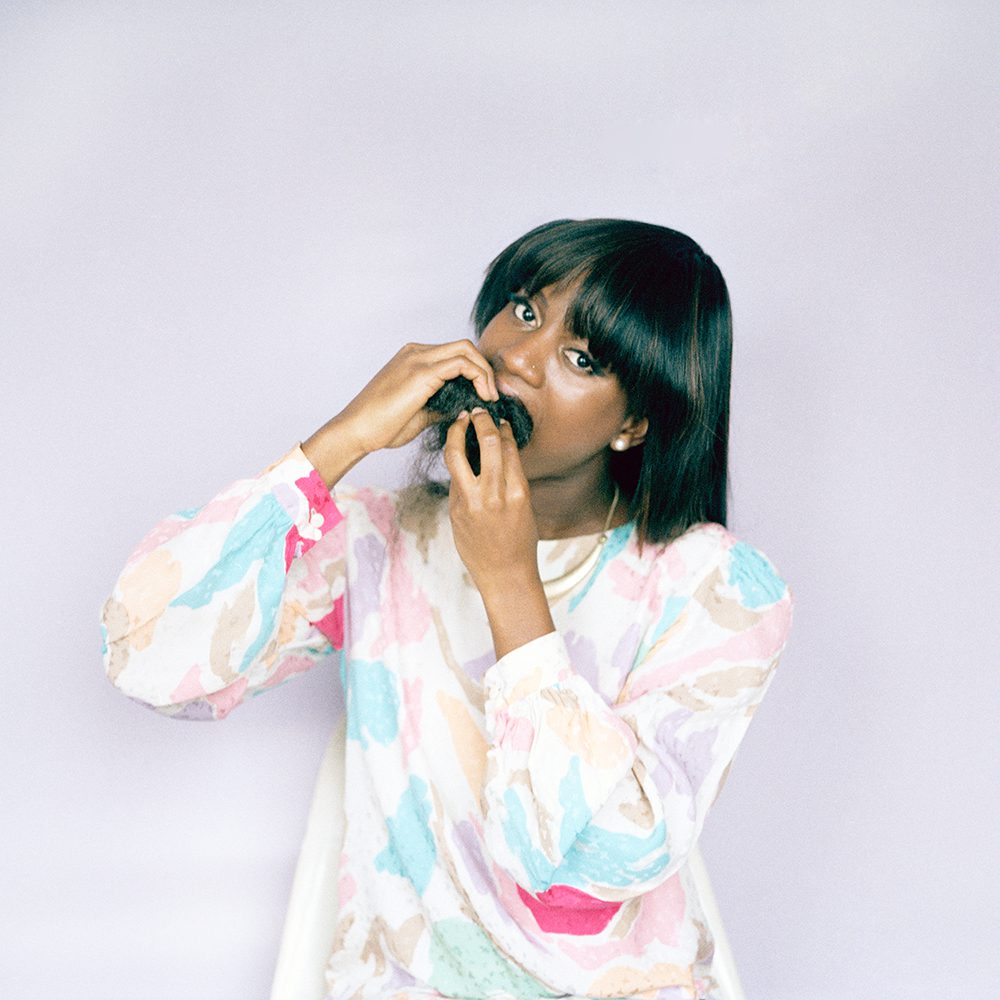
Nakeya Brown, Hair Portrait #3 from the series The Refutation of "Good" Hair, 2012. Inkjet Print. Courtesy the artist.
Rachael Motoma: Being that I was the only one with a weave in my hair, I felt a little intimidated at first. I thought to myself, "What am I doing here with a weave on?" That feeling faded as the day progressed. My beautiful natural hair was underneath. Growing up in Cameroon, hair was a big part of life. I took pride in all the gorgeous hairstyles that my mother, aunties, and neighbors would have me wear, from cornrows to threaded plaits. I see myself as a representative of those many traditions in this piece. There is no one definition for black hair; it is ever-changing. It is everything.
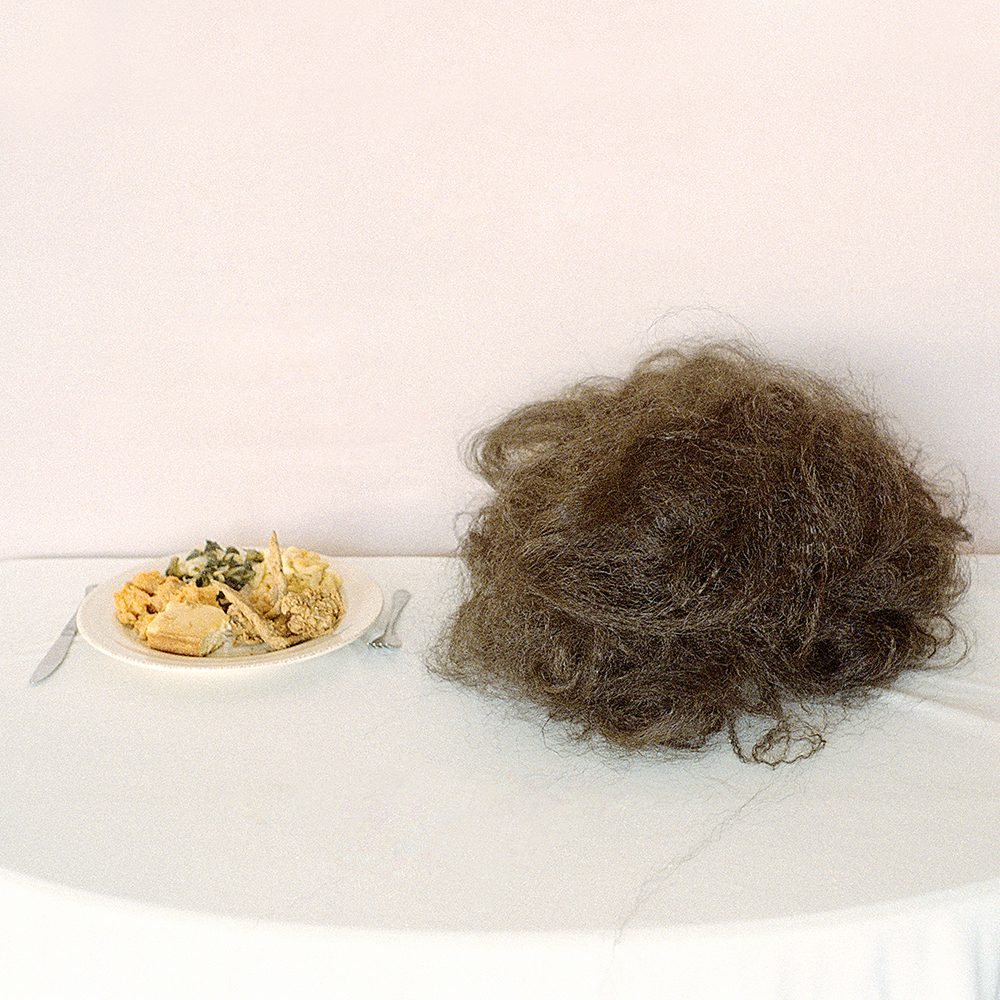
Nakeya Brown, A Plate of "Good" Hair from the series The Refutation of "Good" Hair, 2012. Inkjet Print. Courtesy the artist.
Tania L. Balan-Gaubert: In the photos that juxtapose food and hair, I see hunger. I see the desire to be satiated by ideas of beauty that are as complicated as they are vast. In eating the hair, I see a kind of ecstasy, particularly in the photo of Raphael, which I think perfectly depicts the satisfaction a woman possesses when her tresses are styled in a way that makes her feel powerful and sexy. Nakeya’s work moves me to ask questions I believe a lot of black women ask themselves at some point: What’s feeding me emotionally, physically, spiritually? How does my hair satisfy my understanding(s) of beauty? In what ways is my identity expressed in the way I choose to wear my hair?
My attitude now is anything goes, and it’s couched in the belief that black women are the harbingers of beauty and style. Our womanhood and its multiple expressions through our hair is, without refutation, comparable to none.
Editor's Note
Nakeya Brown is a photographer based in Washington, DC, where she is currently pursuing her MFA at George Washington University.



